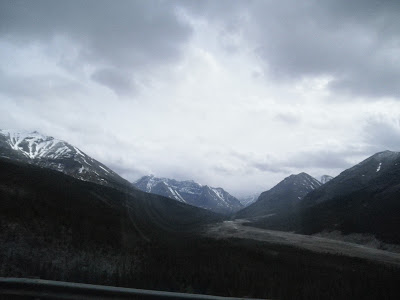 |
| Given the image of being clean and safe, but do we really want it? Accessed 25, August 2011 from Autoblog |
There has recently been much talk involving climate change and global warming. While I believe that it is something that we should be aware of and our overconsumption as a post-industrialized society is not helping matters, I also believe that many people are buying into the panic and “state of fear” which has been perpetuated through the media and other outlets. In anycase, the government has recently created policies which require by law for all farm (dyed) diesels to be converted to biodiesel during this current year. One can only assume that this has been implemented in order to quell upset over greenhouse gas emissions.
Sure, switching farm fuels to ethanol-mixed fuels is a good idea on paper but in reality, many more problems are created which have been severely overlooked. One of the main problems stems from the fact that after a period of time of approximately six months, biodiesel fuels begin to break down and turn to sludge. Now in any farming operation machinery can sit unused for months at a time. A $300,000+ combine is used for two or three months of the year and sit dormant for the remainder. So, in order to save a little bit of oil every fall a farmer must now drain and clean out the fuel systems of any diesel machine which will not be used within the next six months.
 |
| Combines such as this one can cost over $300,000. Accessed 25 August, 2011 from http://www.colbyag.com/ |
But of course, the farmer will not mind since the usage of cereal crops in creating biodiesel only boosts his profits as the cost of said cereal crops increases. Unless of course that farmer also has cattle, in which case the increased profit from crops will be negated due to the fact that cattle feed also increases in cost. Never mind the fact that half of Africa is currently starving to death while we burn crops.
While the general consensus is clear that corn ethanol isn't as great as once proclaimed, biodiesel has somewhat escaped the criticism swarm (palm plantation biodiesel being the big exception). That may change now that a new study from the Woods Institute for the Environment has found that crop-based biofuels, any of them, will likely speed up global warming rates. The study found that, overall, biofuels pump "far more carbon dioxide into the atmosphere than they could possibly save as a replacement for fossil fuels," according to the AFP. The study authors looked at 20 years' worth (1980-2000) of satellite photos of tropical areas and discovered that half of the biofuel cropland came from virgin rainforests. The imbalance of this deforestation means that it'll take somewhere between 40 and 120 years to pay back the "carbon debt." Algae and cellulosic biofuel sources can not get here soon enough.
Clearly, action does need to be taken in order to help us preserve our environment but simply changing one facet of our lives such as the diesel that farmers use is not a solution. It is a band-aid for a broken leg. There are many more issues at play which affect the local and global environments that need to be taken into account and dealt with in order to create a sustainable future.






























